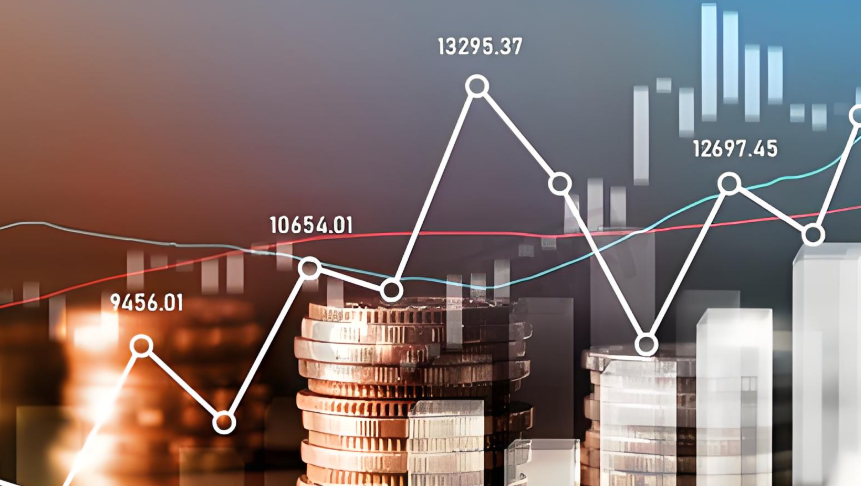The foreign exchange market is experiencing a significant shift influenced primarily by the U.S. Federal Reserve's hawkish stance on interest rates. As we see the U.S. dollar maintain a near two-year high, the dynamics of other currencies like the Japanese yen are also coming to the forefront, drawing attention from investors globally.
Last Friday marked a pivotal moment for the dollar, which has been bolstered by positive economic projections and robust interest rate outlooks from the Fed. This trend has created an atmosphere of strength for the dollar, pushing it toward a strong close for the week. However, the Japanese yen has struggled, reaching new lows as it sinks under pressure from its central bank's reluctance to increase interest rates, sustaining uncertainty in the market.
In the days leading up to this shift, volatility characterized the currency exchange markets. The day prior, the dollar's meteoric rise resulted in the South Korean won hitting its lowest point in 15 years, while the Canadian dollar (USDCAD) fell to a low not seen in over four years. Meanwhile, the Australian and New Zealand dollars also felt the pinch, hitting two-year lows against the dollar. These rapid declines across the board signal a broad-based reaction to the strengthening dollar.
The situation has prompted action from central banks worldwide, extending from Brazil to Indonesia, as they strive to stabilize their national currencies amidst the turmoil. Several central banks intervened, driven by the desire to protect economies from the fallout of a strong dollar and the associated economic turmoil.
During the Asian trading session, the mood appeared dampened with the USD/JPY pair dipping to 157.93 — a five-month low. This decline can be attributed to the Bank of Japan's (BOJ) announcement that further rate increases would not be forthcoming in the near future. The refusal to hike rates is leaving the yen under considerable strain.
Despite the yen's struggles, it did recover slightly, seeing a modest increase of 0.3% to settle at 156.95. However, financial officials in Japan have expressed discomfort with the volatility of the yen, indicating that the government is prepared to intervene should speculative trading push the currency too far down. As a stark reminder, the rapid depreciation of the yen continues to weigh heavily on both traders and policymakers alike.
On the central banking front, the BOJ maintained its near-zero interest rates, with its president remaining vague about future rate hikes. This contrasts sharply with the U.S. Federal Reserve, which hinted at a slowdown in the pace of future rate cuts slated for next year. As analysts attempt to read the tea leaves, some speculate that the Fed's hawkish behavior could provide room for the BOJ to consider its own rate increases, possibly as early as January, although March is the more widely held prediction.

Market insights suggest a bullish outlook on the dollar against the yen, reinforcing the belief that the dollar/yen exchange rate will continue its upward trajectory. According to Carol Kong, an FX strategist with the Commonwealth Bank of Australia, the consensus is shifting towards the expectation of a gradual rate lift by the BOJ, with predictions indicating the likelihood of rate changes occurring around March. Yet, she doesn't fully dismiss the idea of January hosting potential hikes.
As economic indicators rolled in, Japan’s core inflation rate unexpectedly accelerated in November, further impacted by rising food and fuel prices. Such inflationary pressure complicates the landscape and adds another strain to the yen as policymakers navigate these economic waters.
The British pound also found itself in a precarious position, slipping to a one-month low of 1.2475 against the dollar. Its recent instability comes after the Bank of England opted to keep rates unchanged in a split vote of 6-3 on Thursday, indicating divergence among policymakers on how to combat persistent inflation whilst managing a cooling economy.
This split decision has left traders adjusting their expectations, suggesting that they now anticipate a larger decrease in rates by the year 2025 compared to prior forecasts. The pound's weakness reflects a broader trend in which the dollar consistently exhibits strength, with the dollar index reaching a two-year high of 108.53. Expectations of sustained high interest rates in the U.S. lend support to the dollar, and it looks poised for a weekly gain of approximately 1.5%.
With the market now turning its focus to the upcoming U.S. core Personal Consumption Expenditures (PCE) price index—metrics highly favored by the Federal Reserve for tracking inflation—traders are eager to glean insights into potential monetary policy shifts moving forward. Chris Weston, director of research at Pepperstone, underscored the potential impact of the inflation readings on both the dollar and equity markets. His sentiments mirroring the general apprehension around inflation risks, which may indeed be more pronounced than previously anticipated.
The euro also faltered, falling to a one-month low at 1.03435 USD, with projections indicating a possible 1.5% decline for the week due to the dollar's rising strength. Meanwhile, the relationship between the pound and dollar sees the former predicted to drop 1% this week, while the yen is on track for a more significant decline exceeding 2%.
Further complicating the currency landscape are the challenges faced by the Australian and New Zealand dollars, which continue grappling with two-year lows. The Australian dollar (AUDUSD) recently fell by 0.12% to settle at 0.6230, while the New Zealand dollar (NZDUSD) saw a small drop of 0.08% to 0.56265, both currencies reflecting the pressures exerted by the robust dollar and economic uncertainties.
The volatile nature of the current market highlights the ever-present need for vigilance from traders and policymakers as they navigate through this challenging landscape. As central banks around the world react to these shifts in currency valuations and economic indicators, the interconnectedness of global economies becomes starkly apparent, leaving many anticipating the Fed's next moves with bated breath.